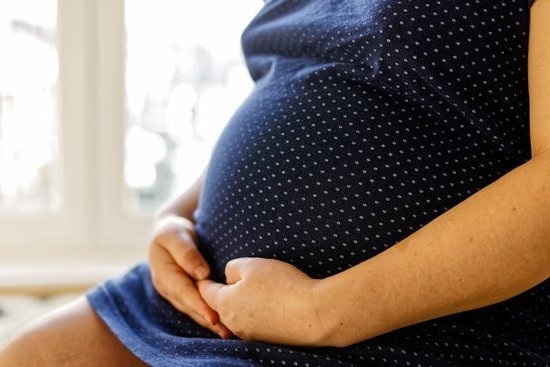Introduction
Ovulation discharge and pregnancy discharge are two very different bodily functions that have distinct characteristics. As such, it is important to understand the difference between the two in order to correctly identify which type of discharge is occurring.
Ovulation Discharge: Ovulation discharge is a clear, slippery mucus that is produced before ovulation occurs. Typically, this type of discharge will last 1-2 days and become more noticeable as ovulation nears. Though some people may experience no discharge during ovulation, for many it is quite common for their cervical mucus to thicken or become watery or egg white-like around this time in their cycles.
Pregnancy Discharge: Pregnancy discharge has a thicker consistency than ovulation discharge, and can range from clear with streaks of white to milky white or yellowish in color. Women typically start to experience pregnancy vaginal secretions shortly after conception and going forward into early pregnancy, often lasting until the second trimester when it decreases in composition noticeably. Pregnancy discharge increases due to hormonal changes before and during early stages of pregnancy and helps keep your vaginal walls moist and healthy while preventing infection.
Conclusion: In conclusion, knowing the difference between ovulation discharge and pregnancy discharge can be helpful not only in distinguishing which type of secretion your body is producing but also recognizing when something isn’t quite right. If you suspect you’re pregnant or aren’t sure whether what you’re feeling could be related to ovulation or pregnancy symptoms, it’s best to speak with your doctor as soon as possible for health advice as well as a diagnosis for any potential issues.
Overview of Ovulation Discharge
Ovulation discharge typically occurs just prior to ovulation and is composed of cervical mucus that has thickened due to the presence of increased levels of estrogen. The cervical mucus helps sperm travel through the cervix to reach the egg during ovulation. Ovulation discharge is usually creamy, milky, and clear in color, with a watery or egg-white like consistency. It is usually stretchy between two fingers and may be present for several days up until ovulation but doesn’t last long beyond that time period. The amount can also vary from light in amount to heavy discharge around ovulation time.
Overview of Pregnancy Discharge: Exploring the Color, Texture,and Characteristics of Pregnancy Discharge – Could also include information about when pregnancy discharge begins and ends
Pregnancy discharge is commonly referred to as leukorrhea, a type of vaginal discharge which is both normal and expected throughout pregnancy. It often appears white or yellow in color when it dries on underwear or toilet paper and typically has an odorless smell. During early pregnancy it can be heavier than pre-pregnancy levels due to increased blood flow and hormones stimulating extra vaginal secretions while during later stages it may become more thin due to additional pressure placed on the vagina by the growing uterus. While it may start anytime after implantation (sometimes as early as 5 weeks) it should start becoming less noticeable around 38 weeks gestation with delivery bringing an abrupt halt to leukorrhea production.
Overview of Pregnancy Discharge
Ovulation Discharge vs. Pregnancy Discharge
One of the biggest differences between ovulation discharge and pregnancy discharge is the timing at which the discharge begins and its duration. Ovulation discharge is typically only present for one to two days, while pregnancy discharge can last up to a month or more. Additionally, ovulation discharge is usually thin, clear, and stretchy in consistency whereas pregnancy discharge may be thicker, milky white or yellow in color, and more abundant in quantity. The type of hormones present will also play a key role in distinguishing between the two discharges; ovulation involves estrogen and progesterone hormones while HCG (human chorionic gonadotropin) is the hormone associated with early signs of pregnancy.
Differentiating Ovulation Discharge from Pregnancy Discharge
Ovulation Discharge:
Ovulation discharge is a normal part of the menstrual cycle and typically occurs around 12 to 16 days after the beginning of a period. It is usually clear or whitish in color, with consistency ranging from sticky to watery. As it is released before you ovulate, this discharge usually happens in the middle of the cycle. The amount will decrease as lower levels of estrogen are produced mid-cycle.
Pregnancy Discharge:
In contrast, pregnancy discharge can start as early as one week following conception and is typically yellow or white. This type of discharge changes throughout the pregnancy, becoming thicker and whiter later on in order to protect your baby from infection. If your discharge is accompanied by an unusual odor, itchiness or swelling around your vagina, it could be a sign of infection and should be medically evaluated immediately.
When to Speak to a Doctor
The primary difference between ovulation and pregnancy discharge is that ovulation discharge occurs during the middle of a woman’s cycle, while pregnancy discharge occurs early in the gestation period. Ovulation discharge typically precedes menstrual bleeding and can help to indicate fertility. Pregnancy discharge, on the other hand, tends to be milky white and increases in production as the fetus develops.
When speaking to a doctor about changes in vaginal discharge, a patient should mention any symptoms they are having such as itching or burning sensations, smelly or unusually colored discharges, and pain or discomfort during intercourse or urination. These may indicate a variety of conditions including sexually transmitted diseases (STDs), yeast infections, bacterial vaginosis, or chlamydia/gonorrhea. It is important to discuss any underlying medical conditions such as diabetes which could cause frequent yeast infections and other issues associated with vaginal health.
Common myths about vaginal discharge include thinking that it should stay clear all the time; this is not true as all women have varying amounts of colorless vaginal secretions throughout their menstrual cycles . Menstrual blood does not mean that you are infertile either; most forms of irregular periods do not necessarily have an impact on fertility. Additionally, strong odors do not always signify an infection; slight changes in scent are quite normal for individuals with varying hormone levels due to puberty/menopause/etcetera.
Conclusion
The primary difference between ovulation discharge and pregnancy discharge is that ovulation discharge is not associated with pregnancy. Ovulation discharge often occurs before or around the time of ovulation, typically as a thick white substance that helps sperm reach an egg for fertilization. Pregnancy discharge is much different from ovulation discharge since it occurs during pregnancy due to hormonal changes and increased blood flow in the body. It may appear differently depending on the stage of the pregnancy and can range in consistency, color, and even smell.
In conclusion, while some symptoms are similar between ovulation and pregnancy discharge, they are caused by very different processes. Therefore, understanding the differences between these discharges can help individuals identify potential signs of fertility or early stages of pregnancy. For more information about distinguishing between ovulation and pregnancy discharge, readers can consult their healthcare providers or explore trustworthy online resources such as The American College of Obstetrics & Gynecology website.

Welcome to my fertility blog. This is a space where I will be sharing my experiences as I navigate through the world of fertility treatments, as well as provide information and resources about fertility and pregnancy.





